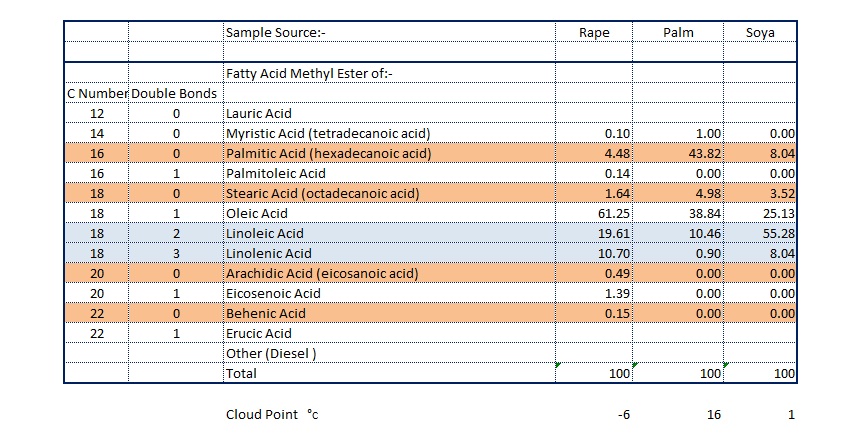Request file: FAME.xlsm
Fatty Acid Methy Esters (FAME) have been in use for several years following the introduction of incentives for refiners to blend up to 7% into diesel. Even at this low level, the quality of FAME in terms of cold flow and also impurity levels has demanded care is taken handling and blending these components.
FAME sources can be analysed and characterised by Gas Chromatography and Mass Spectroscopy (GC.ms) to identify the constituent chains. The table below gives examples of three of the common sources, Rape, Palm and Soya methyl esters which are often mixed to improve cold flow and stability of the pure sources. The chains highlighted in brown are saturated and have the higher crystallisation temperatures, and the blue the least resistant to oxidation due to the higher level of unsaturation.

The calculation file FAME.xlsm works with the GC.ms analysis to interpret cold flow properties, identify the cloud point of the mixture and least soluble components. Mixtures of FAME can also be checked based on their analysis compared to the characteristic analysis of the different sources.
Blends of FAME with normal diesel can be entered and Cold Flow properties checked as the ratio of FAME increases.
Most commercial FAME products contain traces of impurities including the gylcerides and larger sterol glucoside compounds. These can cause filtration problems and the worksheet includes routines to predict limiting impurity levels before the FBTi specification becomes a problem. The benefit of dispersant chemistries and negative synergy with water is included in the calcuation routine.